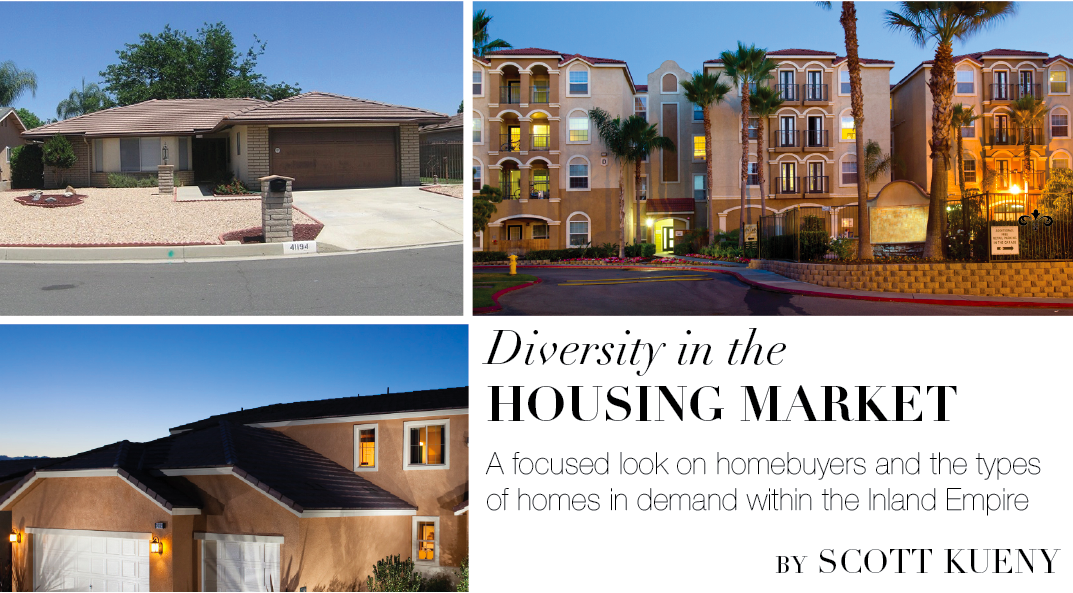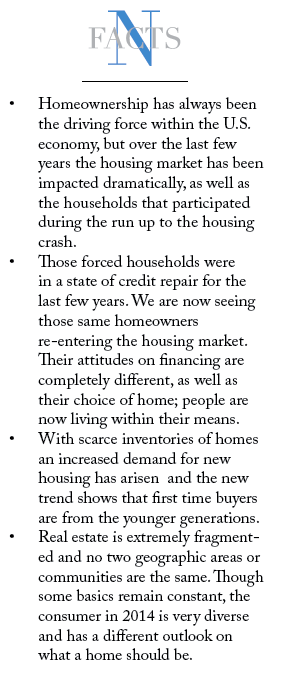
Diversity in the housing market is a broad topic, and one with many avenues to venture down. There is a range of buyers and sellers and there always will be. Further, there are an equal number of products for those same buyers/sellers as well. Over the last few years it went from homeowners to banks, investors, foreigners and it is beginning to circle back to homeowners.
Reflecting back on the most recent U.S.Census Bureau State and County Quick Facts data, one can immediately notice diversity, from the various ethnicities, age makeups, and types of homes being owned. This is by far the most widely assumed diversity today within the American melting pot. Most notably though is the homeownership rate. Why is this important? Homeownership has always been the driving force within the U.S. economy, but over the last few years the housing market has been impacted dramatically, as well as the households that participated during the run up to the housing crash. We saw many short sales, foreclosures, and REOs; the resulting effect was many displaced households forced to enter into the rental market.
Those forced households were in a state of credit repair for the last few years. We are now seeing those same homeowners re-entering the housing market. Their attitudes on financing are completely different, as well as their choice of home; people are now living within their means. Competing against these displaced persons are the younger generations in their twenties and thirties beginning their careers and looking to buy their first home. With scarce inventories of homes an increased demand for new housing has arisen and the new trend shows that first time buyers are from the younger generations. These demographics favor higher-end lofts, condos, and townhomes over the traditional single-family residences.
There are plenty of examples of these high-end properties in the Los Angeles area, and the model is slowly working its way out to the Inland Empire. In Los Angeles there are the Ritz-Carlton Residences, the Wilshire Coronado, and 432 Oakhurst set to open in the summer. Most of these communities offer gym facilities, pools, pet amenities, and social activities for residents to interact with one another. In the Inland Empire Lewis Development Corporation built Santa
Barbara in Rancho Cucamonga.
Within the Inland Empire we are seeing homebuilders build again, and this is a positive sign for the area. A unique finding came from The Urban Land Institute’s (ULI) report on Emerging Trends In Real Estate 2014, “…interest in development is up in 2014, and it isn’t the multifamily sector, that lands at the top of the list. Industrial development is where respondents feel the best opportunities exist for development in 2014.” The Inland Empire has long been a hub for industrial warehousing and this amplified emphasis on industrial could spell improved demand for housing starts. Well-known Inland Empire economist John Husing estimated an increase in housing starts of 6,442, up from 4,737.
 The Inland Empire is comprised mainly of blue-collar workers, and a potential industrial spike will likely increase blue-collar jobs. In John Husing’s same presentation he highlighted that manufacturing could be a major growth source for the Inland Empire. This in turn will attract more workers, and as a result increase the demand for housing. With the median wage for manufacturing sectors between $40,000-$55,000, and using the industry standard that a mortgage payment should not represent more than 35 percent of monthly wages, the higher quartile of blue-collar workers qualify for a $225,000 dollar home, with a 3.5 percent down payment. What the above figure describes is a need for moderately priced housing.
The Inland Empire is comprised mainly of blue-collar workers, and a potential industrial spike will likely increase blue-collar jobs. In John Husing’s same presentation he highlighted that manufacturing could be a major growth source for the Inland Empire. This in turn will attract more workers, and as a result increase the demand for housing. With the median wage for manufacturing sectors between $40,000-$55,000, and using the industry standard that a mortgage payment should not represent more than 35 percent of monthly wages, the higher quartile of blue-collar workers qualify for a $225,000 dollar home, with a 3.5 percent down payment. What the above figure describes is a need for moderately priced housing.
Another facet to the home buying market is the entrance of the female consumer. In an Urban Land Institute (ULI) report titled, Resident Futures, the researchers noted young women in their twenties are buying houses at twice the rate of males. More women are entering the housing market, and their needs, wants, and desires are driving a fresh approach on new communities. An MSN story highlighted the following eleven demands of women buyers: big closets, jetted bathtubs, location, security, a great place for socializing, dedicated laundry room, low maintenance, separate shower and tub combination, two-car garage, great kitchen, and a smart layout. With no signs of slowing, the woman consumer is one that the housing industry will be heeding in their housing concepts.
Fostering more housing diversity is the Baby Boomers. The Baby Boom generation was born between 1946-1964, with roughly 4 million born every year from 1954-1964 making up 40 percent of the US population, and is one of the largest groups in the United States. At the date of this publishing the youngest Baby Boomer is 49 years old. As the enormous population of Boomers ages, their need for adequate housing will be stressed. Signs of these developments are already in place as more new homes include a downstairs suite complete with separate bedroom, bathroom, and entrance.
Real estate is extremely fragmented and no two geographic areas or communities are the same. Though some basics remain constant, the consumer in 2014 is very diverse and has a different outlook on what a home should be. Scared from the 2008 housing crash and subsequent recession, the consumer is very cautious and more financially aware. Moreover as the Baby Boomers continue to age their impact in the local markets will also drive change and product types in the housing market. The world will continue to shrink as well, and as people immigrate and emigrate to and from areas, the local real estate markets will evolve to reflect these changes. Diversity is inevitable, and the real estate industry is evolving to accommodate and embrace these changes.
—
 Scott Kueny
Scott Kueny
Strategic Business Partner
Ticor Title Company
www.ticoroc.com

 Login
Login
